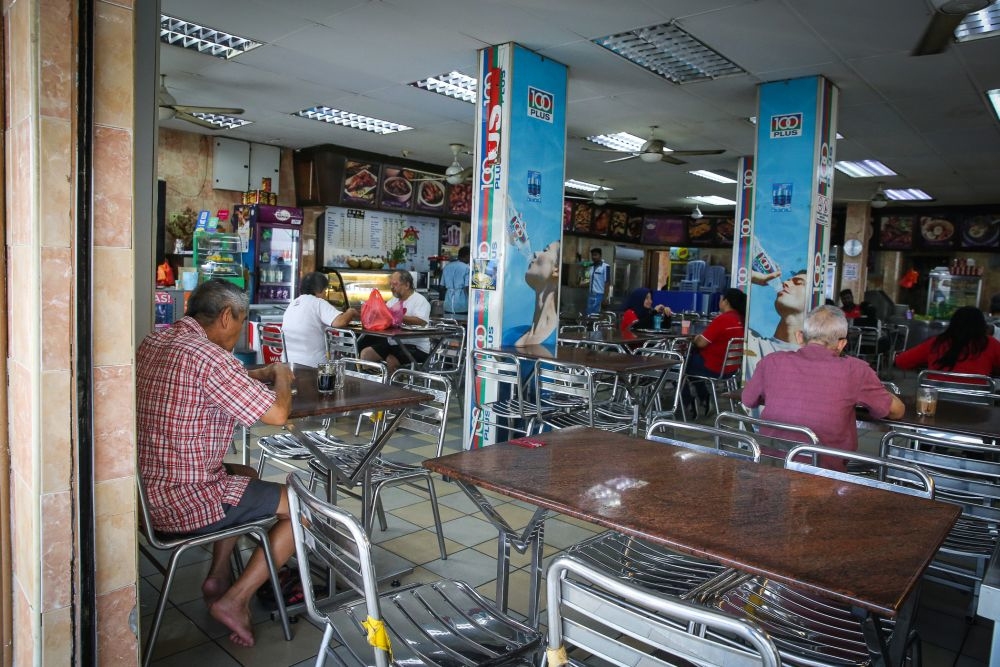MARCH 14 — In my younger years — when dinosaurs roamed the planet and selected shopping malls — I felt the government forced people to calculate mentally actual and displayed prices for their own good. Delay mental stagnation by keeping people’s brains on their brain-toes. A public service. Lower nationwide Alzheimer cases.
Years later, it turns out the whole matter emerges from neglect and a genuine disinterest in consumer protection. Consumers, or voters, are several notches below our leaders’ focus, apparently.
Far below official trips to countries with daylight savings, admonishments of foreign governments unsuitably disinterested — the shock and horror! — in the human rights of inhabitants thousands of miles away from our borders and meetings in large Putrajaya buildings.
Oh, the ++ headache.
When the listed price — on the board or poster as RM__++ — is not the actual price after the proprietor adds tax — SST in our case — and service charges.
The final bill was higher than what the naked eye thought it would be.
Consider this. All outlets with service charges and taxes have elaborate and integrated electronic billing systems, which begs the question, why not just include already from the start? Skip the ++ phase.
Rather than state RM10++, just display RM11.80 — the 8 per cent SST (RM0.80) and the 10 per cent Service Charge (RM1.00) factored upfront.

After all, it is the amount due. What the bill asks. So, why not just show what is owing? Why the need to surprise customers?
Entice a crowd by misleading, more likely to enter if it is RM10 as opposed to RM11.80? But the customer still ends up RM11.80 poorer.
Trade norm, for marketers to stretch truths or qualify offers, but who protects the consumer?
Government.
Only the state can force full price disclosure, aid consumers’ informed choice process.
Businesses want transparency, people want disposable income
Outlets claim they are only telling what they charge and what the government takes, making sure customers know the split.
This was widespread after the introduction of the GST on April 1, 2015 — and ended in 2018 by Pakatan Harapan.
But while it lasted, shops put the price before and after GST side by side, to insinuate the price increase was not their doing but the government's.
There is a cynical answer to this. Customers care not about who gets what from their money spent.
Compared with the pasar malam vendor, he pays local council, his general workers and the RELA staff for instance. But he does not remind patrons that 50 sen from the RM6 for the chicken rice goes to local authorities, labour and security/crowd management.
Unfair taxes and the fight against them notwithstanding, the average Jane just wants to know beforehand to prevent overspend.
How them other people do it?
A view of practices elsewhere assists discussions.
The Australian Competition and Consumer Commission stipulates “Businesses must display a total price that includes taxes, duties and all unavoidable or pre-selected extra fees.” If there are non-permanent surcharges, like weekend or after midnight fees, they have to be clearly and prominently displayed.
The onus is on owners, not customers. Offenders are fined.
Singapore’s Inland Revenue Authority enforces similar rules, but exempts F&B which has service charges. Because GST is to be charged on both the amount for the service and the service fee imposed by the supplier.
The US has the Junk Fee Prevention Act on the hill, waiting for passage. On top of the various state laws from New York to California to shield the consumer from hidden fees when purchasing flight tickets or a steak. The European Union wants prices clear, taxes already included and unit price quoted (bunching items to mask per unit price is common).
The common thread is to simplify comprehension of cost burdens for consumers, not let numeracy compromise consumers.
People oriented societies insist on price transparency to enable informed choice for its electorate. Malaysia in its Madani avatar claims exactly this.
Broken friendships
There are social victims of the ++ predicament.
More than a gazillion friendships have been destroyed.
Two friends sit at a bistro. They order what they wish. The bill arrives. Friend A pays and ask Friend B to pay his share. Friend B points to the price before taxes and service charges, and Friend A gets flustered about Friend B’s arithmetic deficiencies or inability to decipher per centage on his smartphone.
Words lead to shouts, lead to a knife-fight. OK, the acrimony probably stops short of blades, but deleting each other from contact lists is brutal.
Or Friend A sucks it up, goes home, carefully builds a plan to be executed over years to exact revenge, ruining marriages and pet management along the way.
Either scenario is ghastly, even if not equally bloody or material for a movie.
Just not a priority
It upsets people every day yet our legislators have zero conversations about it, let alone seek a way to solve it. Perhaps they earn too much for it to be a problem in their lives, so it is beneath them.
The matter is not straightforward, looking from how not all costs can be consistent, therefore not possible to be stipulated upfront. But what is evident, companies have the motivation, resources and cleverness to run rings around consumers.
Government has to represent the people and craft policies to protect the public.
Work to rectify the situation is not contentious, and it is ideologically neutral since all PAS, Bersatu and PKR prefer is to have consumers protected. It does not cost the government anything and it is a process issue. However, neither politicians nor the senior civil servants find this important. That’s what is most telling. It is in plain sight but they cannot be bothered.
* This is the personal opinion of the columnist.






















